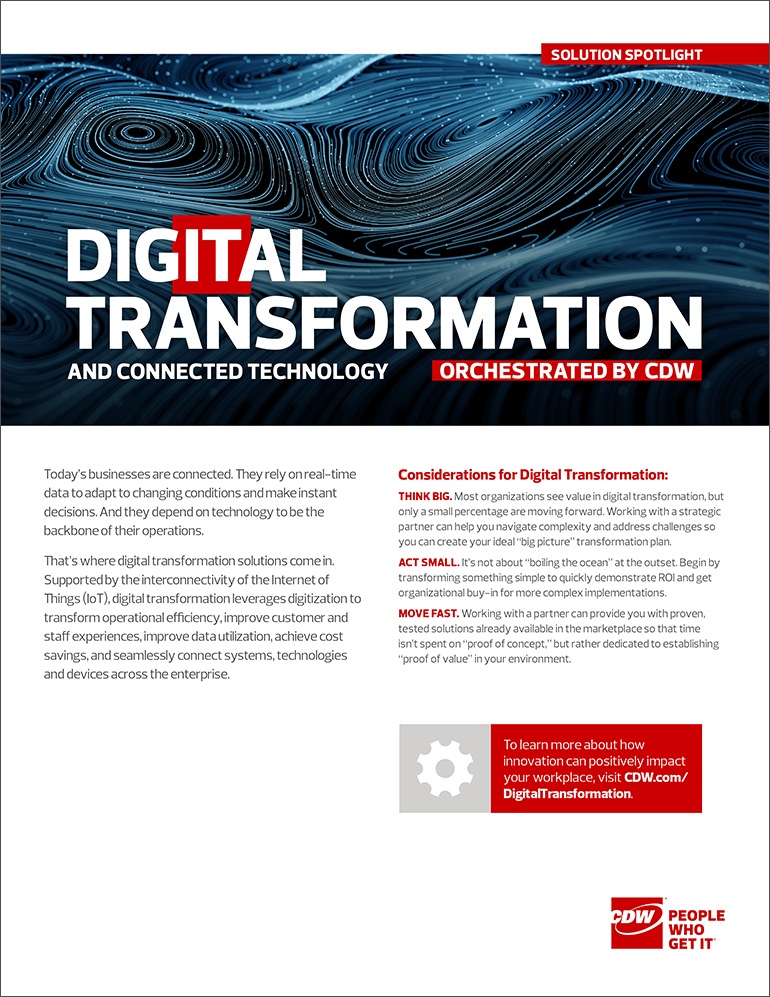Article
Digital Transformation for the Enterprise
Today’s businesses are connected. They rely on real-time data to adapt to changing conditions and make instant decisions.

Technology is the backbone of modern businesses.
Digital transformation leverages digitization to transform operational efficiency, increase customer and staff experiences, improve data utilization, achieve cost savings, and seamlessly connect systems, technologies and devices across the enterprise.
Check out our Solution Spotlight to learn more about IoT-supported digital transformation for your enterprise.
CDW has the experience to help you orchestrate a digital transformation solution that future-proofs your business and puts data insights at your fingertips.
You May Also Like
Use Case
What is Network Virtualization?
What is network virtualization, and how can it improve your business operations?
White Paper
Organizations Put Digital Innovation into Action
Valuable use cases show IT leaders how they may benefit from IoT.
Article
Embracing Tech to Deliver Captivating Customer Experiences
Learn about technologies that are helping retailers deliver enhanced customer experiences in-store as well as across the omnichannel experience.
MKT25377